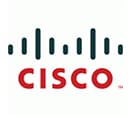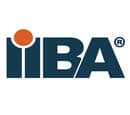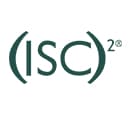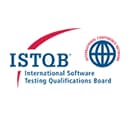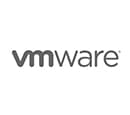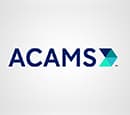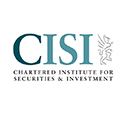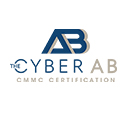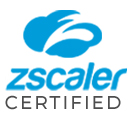Overall explanation
Below you will find how you can plan and draft the essay. Remember this is an example of one way you could approach the question. At Level 6 the questions are much more open so your response may be completely different and that's okay.
Essay Plan
Divide into two separate answers
1) Internal changes; personnel, systems, structure. External changes; STEEPLED and Porter – legislation, economy, technology, competitors.
2) Intro: what is a forcefield analysis? Explain how to do one. Then How can it help? Define objectives, impact on communication strategy
Example Essay
Change is a constant in the business world, and organizations must adapt to various internal and external forces to remain competitive and relevant. Understanding the sources of change is crucial for managing transformations effectively. In this essay, we will explore the distinction between internal and external sources of change and discuss how they impact personnel, processes, and company structure.
Sources of Internal Change within a Business:
People Changes: Changes in personnel, such as hiring, firing, promotions, and retirements, can have a profound impact on an organization. New hires may require training and onboarding, potentially affecting productivity during the transition. Terminations or layoffs may lead to temporary disruptions and workload adjustments for remaining employees. Moreover personnel changes can influence the organization's culture. New employees may bring different values and perspectives, while the loss of experienced employees can result in a shift in the workplace culture. Promotions and changes in leadership positions can influence decision-making, team dynamics, and the overall direction of the organization.
Systems Changes: Implementing or modifying systems, including software, technology, or operational procedures, can significantly affect how an organization operates. Well-planned systems changes can lead to increased operational efficiency, reduced errors, and improved decision-making, but employees may need time to adapt to new systems, potentially causing a temporary decrease in productivity. Moreover, systems changes can impact data storage, retrieval, and analysis, influencing how information is utilized within the organization.
Company Structure Changes: Altering the organization's structure, including hierarchies, departments, or reporting lines, can reshape how work is organized and executed. Employees who experience shifts in job roles, responsibilities, or reporting relationships, can affect job satisfaction and performance. It may also require adjustments in communication processes, potentially impacting the flow of information within the organization. A well-designed company structure can enhance efficiency and adaptability, while a poorly structured one may lead to inefficiencies and bureaucracy.
Sources of External Change Impacting a Business:
Legislation Changes: Changes in laws and regulations can have immediate and long-term consequences for businesses. Adapting to new regulations may require financial investments in compliance measures, training, or legal counsel. Businesses may need to modify processes and practices to ensure adherence to updated legal requirements. Companies that can proactively adapt to legislative changes may gain a competitive advantage by being compliant and avoiding penalties. An example of this is the upcoming changes to Public Sector Procurement Regulations which will take place in 2024, following the UK’s departure from the EU.
Economic Changes: Economic shifts, such as recessions, inflation, or economic growth, can affect an organization's financial health and market position. Economic downturns can lead to decreased consumer spending and reduced revenue, requiring cost-cutting measures like layoffs or budget reductions. Conversely economic growth can present new market opportunities, prompting expansion, product diversification, or investment in research and development. Economic fluctuations can also disrupt supply chains, affecting inventory management, pricing, and delivery times.
Technological Changes: Rapid advancements in technology can drive changes in how businesses operate and compete. Embracing technological advancements can enhance operational efficiency, reduce costs, and improve customer experiences. Employees may require training to adapt to new technologies, and organizations may need to invest in digital infrastructure. Technology-driven innovations can disrupt traditional industries and create new competitive threats or opportunities. For example the music industry has seen huge changes in the past 10 years due to the increasingpopularity of streaming platforms such as Apple Music and Spotify.
Competitor Actions: Actions taken by competitors, such as new product launches, marketing campaigns, or market entries, can influence an organization's market share and strategy. This may require adjustments in pricing, product offerings, or marketing strategies. An organisation should look at Porter’s 5 Forces and STEEPLE analysis to fully understand potential external sources of change.
In the dynamic business environment, both internal and external sources of change play significant roles in shaping organizations. Recognizing these sources of change and effectively managing them are essential for organizations to succeed.
Forcefield Analysis
Lewin's Force Field Analysis is a valuable tool that can help a leader plan for change by providing a structured framework for understanding the forces at play in an organization when considering a change initiative. Developed by psychologist Kurt Lewin in 1951, this model helps leaders assess the driving forces that promote change and the restraining forces that resist it.
Identifying Driving and Restraining Forces:
Driving Forces: These are factors that push for change and support the desired change initiative. Identifying these forces helps leaders understand what is propelling the organization toward change. Examples of driving forces include market opportunities, customer demands, and performance improvement goals.
Restraining Forces: These are factors that oppose or hinder change. Recognizing these forces is crucial as they represent obstacles that need to be addressed or overcome. Restraining forces can include employee resistance, existing processes, or budget constraints.
Assessing the Balance:
After identifying driving and restraining forces, leaders can assess the balance between them. This analysis provides a clear picture of the overall readiness for change within the organization. If driving forces outweigh restraining forces, it suggests a favourable environment for change, while an imbalance in the other direction may require more effort to gain buy-in and overcome resistance.
Prioritizing Action Steps:
Once the forces are identified and their balance is assessed, leaders can prioritize action steps accordingly. For driving forces, leaders can focus on leveraging them further and ensuring that they continue to support the change. For restraining forces, strategies can be developed to mitigate or overcome them. This may involve addressing concerns, providing training, or reallocating resources.
How this can help a leader plan for change:
Force Field Analysis provides a foundation for developing a comprehensive change management plan. Leaders can use the insights gained to structure the plan, including defining specific objectives, timelines, and key performance indicators (KPIs) to measure progress.
Understanding the forces at play allows leaders to tailor their communication and engagement strategies. They can target communication efforts toward addressing the concerns and motivations of employees, stakeholders, and other relevant parties. By addressing restraining forces through effective communication, leaders can build support for the change.
The analysis doesn't end with the initiation of change; it continues throughout the change process. Leaders can continuously monitor the balance of forces and adjust their strategies as needed. If new restraining forces emerge or driving forces weaken, the change plan can be adapted accordingly to maintain momentum.
In summary, Lewin's Force Field Analysis provides leaders with a structured approach to understanding the dynamics of change within an organization. By identifying driving and restraining forces, leaders can better plan, execute, and manage change initiatives, ultimately increasing the likelihood of successful implementation and achieving desired outcomes.
Tutor Notes
- I have split my answers here and clearly signposted this to the examiner. A top tip is to consider the examiner’s first look at your essay. By doing this, they can clearly see within the first 10 seconds that I’ve understood the question and I’ve answered all parts. It’s a way to set yourself up for success. So, use all the headings and spacings you can. I don’t think you can use bold in the exam, but you could use capital letters instead.
- A way to improve on the above would be to give more examples. For the Forcefield analysis you could talk about a potential change at company X being the introduction of a new product line, and say what the forces for and against would be. This would really hammer-home to the examiner you know your stuff.
- Sources of change – p. 224 (note the study guide says internal sources are people, structure and processes, I used the word system in my essay above rather than processes but it’s the same thing). External sources of change are anything from STEEPLED and Porter. Remember the question is only worth 10 points, so 3 or 4 internal and 3 or 4 internal is more than enough. Don’t do a full STEEPLED. You don’t have time.
- Forcefield analysis is p. 232
